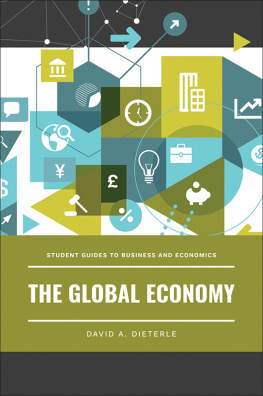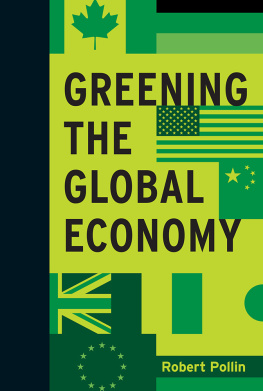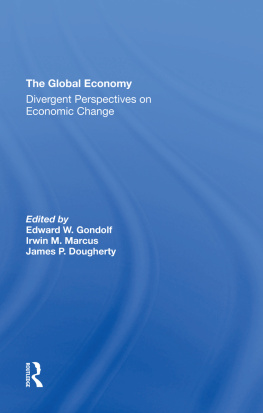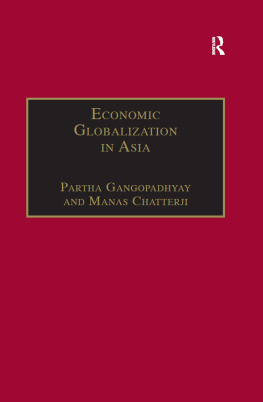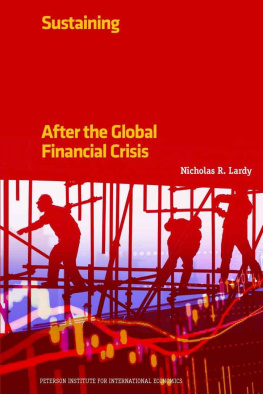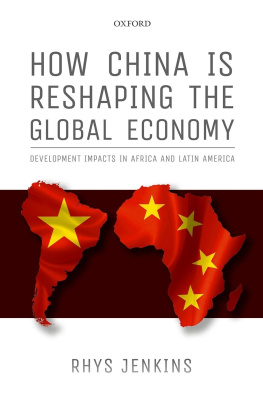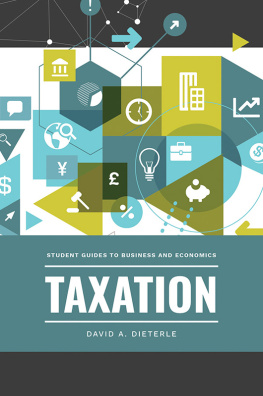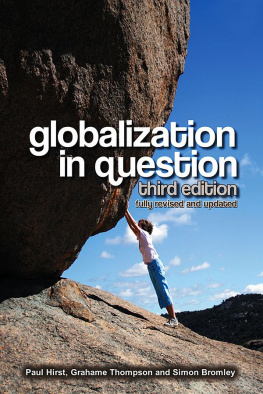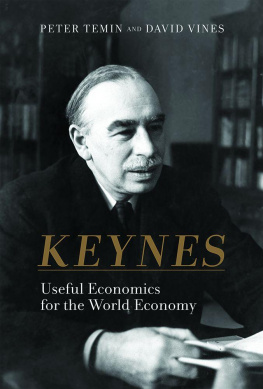The Global Economy
Recent Titles in Student Guides to Business and Economics
Taxation
David A. Dieterle
The Global Economy
David A. Dieterle

Copyright 2020 by ABC-CLIO, LLC
All rights reserved. No part of this publication may be reproduced, stored in a retrieval system, or transmitted, in any form or by any means, electronic, mechanical, photocopying, recording, or otherwise, except for the inclusion of brief quotations in a review, without prior permission in writing from the publisher.
Library of Congress Cataloging-in-Publication Data
Names: Dieterle, David Anthony, author.
Title: The global economy / David A. Dieterle.
Description: Santa Barbara : ABC-CLIO, 2020. | Series: Student guides to business and economics | Includes bibliographical references and index.
Identifiers: LCCN 2019049262 (print) | LCCN 2019049263 (ebook) | ISBN 9781440869853 (print) | ISBN 9781440869860 (ebook)
Subjects: LCSH: Economic history. | International economic relations.
Classification: LCC HC21 .D474 2020 (print) | LCC HC21 (ebook) | DDC 337dc23
LC record available at https://lccn.loc.gov/2019049262
LC ebook record available at https://lccn.loc.gov/2019049263
ISBN: 978-1-4408-6985-3 (print)
978-1-4408-6986-0 (ebook)
24 23 22 21 20 1 2 3 4 5
This book is also available as an eBook.
Greenwood
An Imprint of ABC-CLIO, LLC
ABC-CLIO, LLC
147 Castilian Drive
Santa Barbara, California 93117
www.abc-clio.com
This book is printed on acid-free paper 
Manufactured in the United States of America
To Branda, Laura, Jillian, and Mary, my four tax deductions
who grew into beautiful women with beautiful families.
Thank you for a life blessed.
Contents
CHAPTER 1
Economic Rules of the Global Economy
CHAPTER 2
Global Economy, Politics, and Culture
CHAPTER 3
Gains from Trade
CHAPTER 4
Protectionism and Standards
CHAPTER 5
Measuring the Global Economy
CHAPTER 6
Global Financial Systems: Exchange Rates and Exchange Rate Systems
CHAPTER 7
The Organizations That Influence the Global Economy
CHAPTER 8
International Rules, Trade Agreements, and Trade Unions
CHAPTER 9
Major Controversies of the Global Economy
CHAPTER 10
The Influencers of the Global Economy
At the time of this writing, the United States (the world, actually) is celebrating the fiftieth anniversary of Neil Armstrongs first steps on the moon. One of the most famous pictures of all time, arguably, is the picture of the earth from the moon taken during an earlier Apollo space flight. That picture not only symbolizes mans quest into space but also shows us how small and fragile the earth is in the grand scheme of the cosmos. Our journey through the following pages is a look at why and how the nations of our small, fragile sphere in the cosmos cooperate, or not, with each other in a global economy.
There is a saying that if we dont learn from history, we are bound to repeat it. There is a lot of truth in that statement as history has shown us many times. It is important for us to begin by looking backward at the history of the global economy. The Chronology and Introduction will take you on a journey back in time to explore what history has to tell us how the global economy of today took shape.
to determine if the nations themselves are functioning so that they can fully participate and benefit in the global economy.
, we will explore the vital concepts of trade: absolute advantage and comparative advantage. Without trade, there is no global economy. Why do nations trade? How can all nations trade and be part of the global economy? We will answer all these questions.
, we will explore why changes occur in the global economy. We will dig deeper into why nations feel the need to change the rules from time to time. We will look at how nations try to protect their domestic economy and, at the same time, still be a global economic partner.
All nations want to know how their economies are measuring up to other economies. In extends that discussion, as we explore the money exchanges of trade and financial transactions across the globe. Exchange rates and exchange rate systems have become a vital component to the functioning of an efficient global economy. Companies of different countries with different currencies must exchange currencies. Foreign exchange markets facilitate currency exchanges, making global trade possible.
In , the discussion extends to trade agreements, trade unions, and international rules for the global economy. In todays global economy, nations need trading partners. Often, these partners agree to their own set of rules. In this chapter, we will explore some of those agreements and the ways that they help both the nations and global economy.
, we will take a look at what keeps nations apart, what keeps them debating and disagreeing, and what, at worst, prevents their global participation. An overriding theme here is the continuing battle between politics and economics.
In , you will be introduced to some of the individuals whose work and writings have had a major influence in determining todays global economy landscape. From the earliest explorers of the thirteenth to fifteenth centuries to the historical masters Adam Smith and David Ricardo, to the modern development economists Emily Oster and Paul Collier and others, their writings, research, and practices have paved the way for nations to participate in todays global economy. While we certainly could not identify all contributors in these few pages, you will note the cross section of expertise, experience, and views that makes the global economy the dynamic mechanism it is today.
Finally, in the Conclusion, we look out with our crystal ball into what could be the key issues of the future. These are the potential issues of your future global economy. It will be up to your generation to create solutions. It will be your generation who takes these challenges and turns them into opportunities. There will be issues and challenges for the future global economy that we cannot even imagine or anticipate today. It is our hope that this journey will prepare you to address them as knowledgeable, educated global citizens. To assist your becoming that educated global citizen, we finalize our journey with a few questions for further exploration.
The global economy is master to over seven billion people and growing. How nations choose to cooperate and work together in the future global economy will ultimately dictate the terms by which all nations live, work, play, and survive. Good luck.
No project succeeds in a vacuum. Without the confidence of my editors at ABC-CLIO, specifically Hilary Claggett for helping start the project and Maxine Taylor for navigating our way to the end, this book would not have been possible. I also need to recognize the editing skills of Angel Daphnee. She definitely made the book look and read better. To all you, thank you. Of course, no project like this survives without the super support of family. My daughters and their families exhibited the patience of Job. Thank you for putting up with me one more time. Babe, as always, you are my inspiration. You are Beautiful.
In the beginning seems an appropriate start for a journey about the global economy. In the beginning, how did one define a global economy? Certainly they did not understand our economy of the twenty-first century. Did the early hunters and gatherers have a global economy? If we use the literal definition of global as round, then we can be confident it was not global. If the term global, however, refers to the economy that the people of an era know and understand, then they participated in

